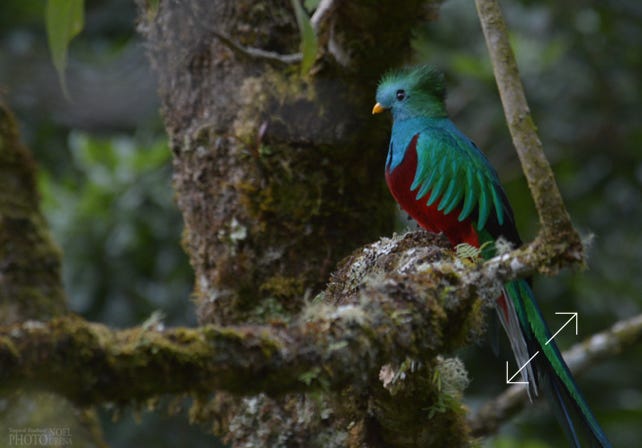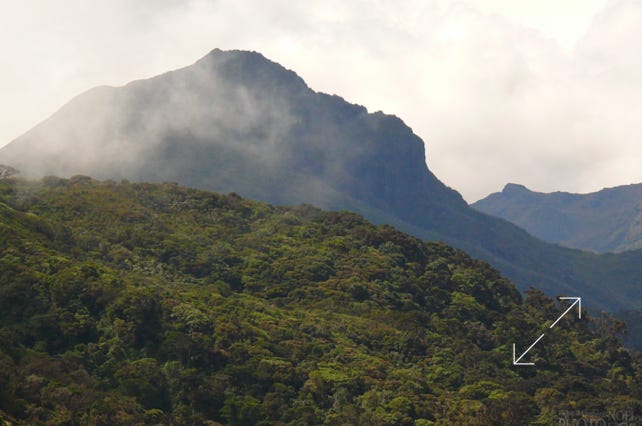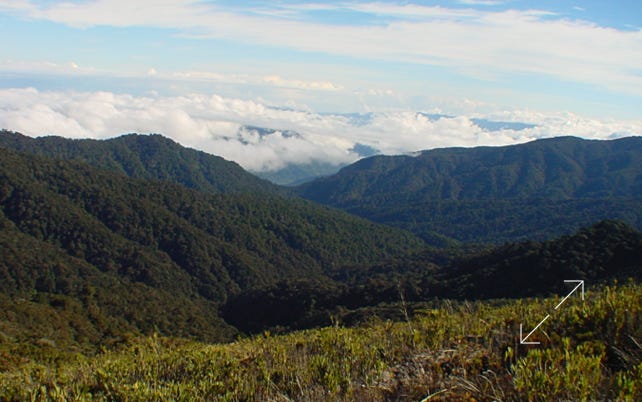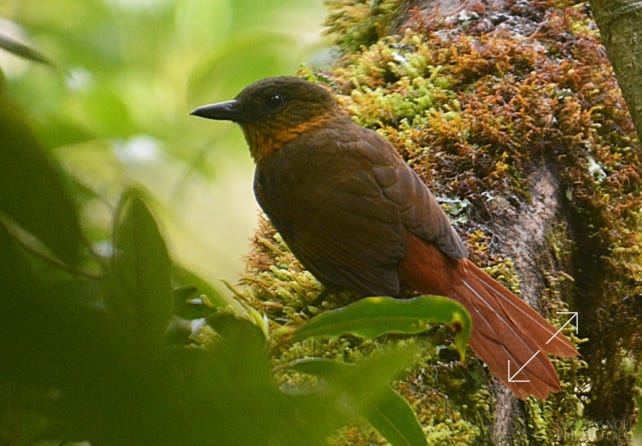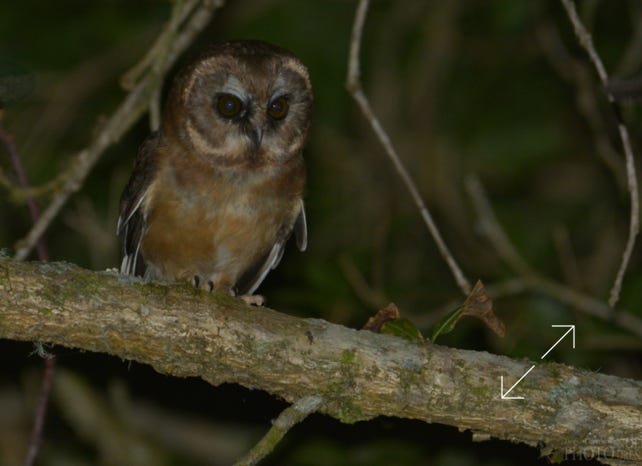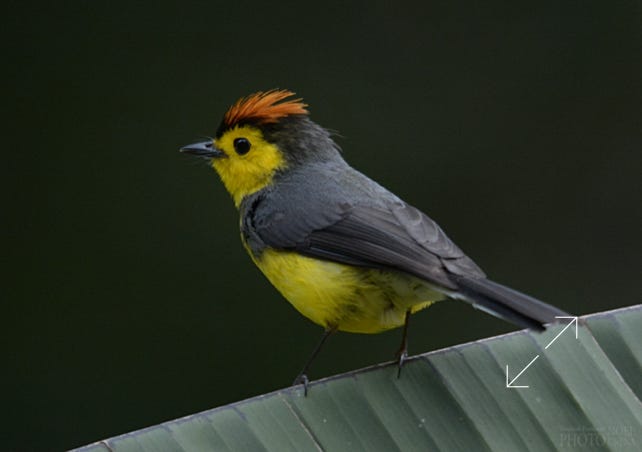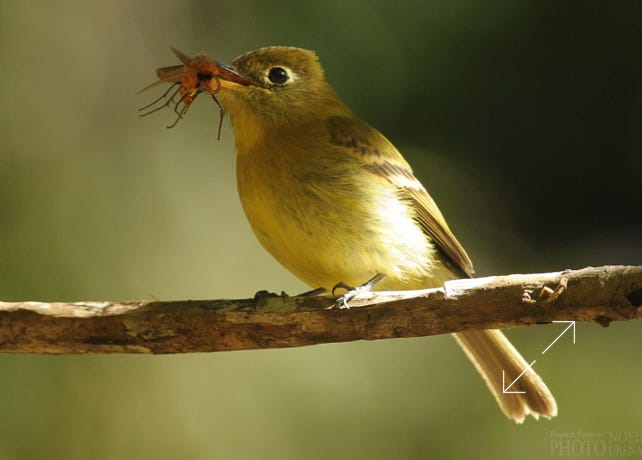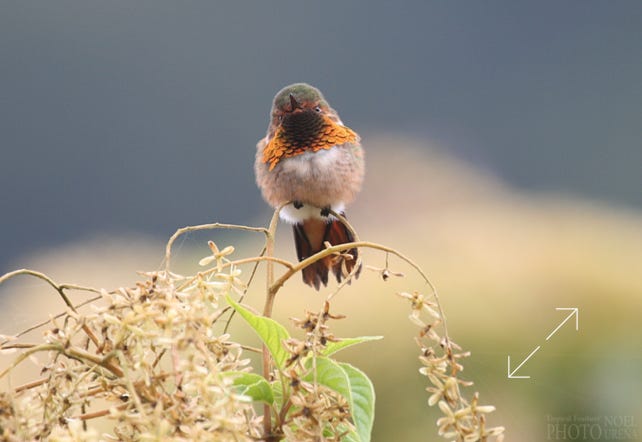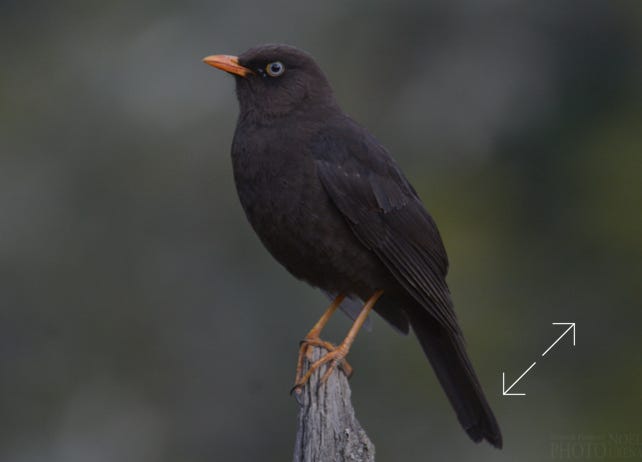
San Gerardo and Providencia de Dota
Natural History of the Talamanca Mountain Range
Over 60 million years ago when Costa Rica didn't even exist, the North American continent would extend down to where currently we find Nicaragua which was then a tropical peninsula. 50 million years ago an intense process of volcanism and tectonic lifts started forming islands between North America and South America. From 5 to 3 million years ago a complete isthmus had been formed, making possible the colonization of species from continental land onto these islands. One of the biggest islands was the current Talamanca Mountain Range, which extends southeast into western Panama. The highest peak of Costa Rica, Mount Chirripo, rises to 3,820 m / 12,532 ft and is found in this mountain range overlooking the Valley of El General. As the best suitable place for colonizing bird life, Talamanca ended up being a paradise for the generation of new species. Also, as the mountain range/island gained elevation, new species evolved within this territory thanks to the well defined continental divide which isolated the Caribbean and Pacific slopes.
The most dominant habitat found in Talamanca is the Tropical Cloud Forest, with about 74% of the trees being oaks, this forest is a massive garden with trees serving as nurseries, the branches and trunks of most trees are filled with bromeliads, orchids, mosses, ferns, Ericacea (very favored by hummingbirds) and Gesneraceae (gold fish plant). All this epiphytic and parasitic growth is stimulated by the ever-present clouds throughout daylight hours which create a constant mist that triggers the diverse forest structures and functions. The understory in the cloud forest grows from 1 to 6 meters tall and it is dominated in most cases by bamboo species of the genus Chusquea such longifolia, tomentosa and talamancensis. Dwarf palms, tree ferns and cyclanths are also abundant. Shrubs found here with members from the Asteraceae, Ericaceae, Melastomataceae, Onagraceae, Rosaceae, Rubiaceae, and Solanaceae. Clusiaceae species occur as shrubs or small trees.
The upper canopy is mostly dominated by oak trees of the genus Quercus, White Oaks and Black Oaks are massive, with some reaching 40 m in height. Other trees include the Lauraceae family which are known as wild avocados, the main food source for Resplendent Quetzals, Northern Emerald-Toucanets and Black Guans.
The average annual temperature in this high elevation forest range from 8ºC at its highest elevations (3,300 m / 10,827 ft) to about 17ºC at the lower elevations (2,000 m / 6,562 ft). The most drastic temperature variations occur in the driest months from December to April where temperatures can drop below freezing. Annual rainfall ranges from 2,000 to 3,500 mm. Just above the tropical cloud forest, the Talamanca Mountain Range exposes another fantastic type of habitat; The sub-alpine tropical rain paramo, with elevations reaching 3,491 m (11,453 ft), mostly dominated by a short stiff bamboo of the genus Chusquea and numerous grasses, as well as representatives of the families Ericaceae, Asteraceae (asters), Apiaceae, Rosaceae, Campanulaceae (bell flowers), Melastomataceae, Bromeliaceae, Scrophulariaceae, Pteridaceae (ferns), and colorful beautiful looking mosses, lichens and club mosses.
Since the paramo is a tropical ecosystem of the high mountains, it is characterized by certain physical, chemical and climatic aspects that influence the biology of all the organisms that live in it. The plant life of these mountains adapt to high elevation air with less density of oxygen and carbon dioxide, low temperatures and frost, high ultraviolet radiation, quick changes of temperature, and the dehydrating effects of the wind, among other factors. Generally speaking, the paramos present a humid and cold climate, with sudden changes in weather and great daily temperature fluctuations which can go from temperatures below 0ºC (freezing) to over 25ºC, producing many times a daily cycle of freezing and thawing. Some animal species, apart from birds, found in the paramo are the Green Spiny Lizard (Sceloporus variabilis), Highland Alligator Lizard (Mesaspis monticola), Coyote (Canis latrans), Puma (Puma concolor), Dice's Rabbit (Silvilagus dicei), Baird's Tapir (Tapirus bairdii), Red-brocket Deer (Mazama americana) and Ring-tailed Cacomistle (Bassariscus sumichrasti).
San Gerardo de Dota (2,200 m/7,217 ft)
In the 1970s a couple of botanists from Harvard University who were studying micro-orchids finalized their research in the San Gerardo de Dota area, locations that had been recently pioneered in (1954). In their scientific publication the botanists included a note mentioning how incredibly abundant the Quetzal was in this valley. This comment triggered the visit of early birdwatchers who started coming to this area since the 70s to look for the elusive Resplendent Quetzal. Aside from this magnificent bird, the presence of regional endemic species, which evolved in the highest mountains of Costa Rica and western Panamá, make this location a perfect destination for birdwatchers. Even non-birders will appreciate looking at the fantastic avifauna of the area and will be thrilled with the stunning views of the Resplendent Quetzal. Over 200 species have been recorded in San Gerardo de Dota-Cerro de la Muerte’s tropical cloud forest and sub-alpine rain paramo.
Places to stay in San Gerardo de Dota
Good places to stay are the famous Savegre Mountain Lodge and Los Sueños del Bosque. Both own by members of the Chacón Zúñiga Family, pioneers of this valley.
Both properties have the most strategic location for birding San Gerardo de Dota. Another good option is Dantica Lodge, for which you definitely need a vehicle to drop into the valley and explore the trails down at Savegre Mountain Lodge and Los Sueños del Bosque. However it is a nice property and offers good birding opportunities and some trails as well (some, a little steep). Trogon Lodge is another great hotel, with exquisite gardens and some good trails (some, a little steep). All of these lodges offer wonderful rooms with hot water and heaters.
Some more modest options are also available in San Gerardo de Dota, one of them is Miriam’s Quetzals and Cafeteria, which offers fantastic traditional food and good bird feeders, and a variety of rustic cabins in the upper portion of the valley If you want to save a bit of money in lodging, enjoy a Costa Rican atmosphere and good traditional food, this is a good option.
Places to stay near the Pan-American Highway
Outside of the Valley, on Kilometer 70 from San José, you find Paraíso del Quetzal Lodge, a famous lodge offering a variety of cabins, some rustic and some with a few more amenities. Typically cooler than the other lodges, offers hot water, coffee maker and heaters. The hummingbird feeders here are fantastic, with the best looks and photo setup in the area for Fiery-throated Hummingbird, an excellent location for watching the Resplendent Quetzal.
Providencia de Dota (1,700-2950 m/5,577- 9,678 ft) - NEW DESTINATION!
If you want to experience the tranquil Costa Rican countryside atmosphere and the relaxation of birding the cloud forest, in combination with middle elevation habitats and beautiful clean rivers and still have access to the sub-alpine tropical rain paramo, you may consider staying in Providencia de Dota. Located in the next valley west from San Gerardo de Dota, really off the beaten birding track, where Tropical Feathers has been the first birding outfitter in exploring this fansastic corner of paradise. Two roads lead into this picturesque valley, one from the Village of Copey, and one from Ojo de Agua accessing from the Pan-American Highway and down through Los Quetzales National Park. Here you can stay at Enrique and Ana’s Home, a small family style lodge and farming operation nestled into one of the best coffee regions in the country. This rustic and charming lodge offers small warm rooms with shared bath or one cabin with private bath, hot water, excellent traditional food, freshly roasted and ground coffee (you can grind your own coffee the old fashion way), and fantastic bird feeders with frequent visits of Red-headed Barbet, Red-legged Honeycreeper, Silver-throated Tanager, Flame-colored Tanager and Acorn Woodpecker. The hummingbird feeders and gardens attract Violet Sabrewing, Stripe-tailed Hummingbird, Snowy-bellied Hummingbird, Magenta-throated Woodstar, Green-crowned Brilliant, Scintillant Hummingbird, Talamanca Hummingbird and Purple-crowned Fairy.
The roads into Providencia offer some of the best access to a tropical cloud forest and have very little traffic, so it is very convenient for daytime birding and owling. Sightings of Puma and Baird’s Tapir are quite possible mainly during night outings. The middle elevation habitats require a 4WD vehicle to access, and of course, to be accompanied by a guide.
Some good birds of the cloud forest here include: Resplendent Quetzal, Collared Trogon, Collared Redstart, Slate-throated Redstart, Spangle-cheeked Tanager, White-winged Tanager, Golden-browed Chlorophonia, Northern Emerald-Toucanet, Silver-throated Jay and occasionally Azure-hooded Jay, Buffy-crowned Wood-Partridge, Spotted Wood-Quails, Black Guan, Flame-throated Warbler, Silvery-fronted Tapaculo, Wrenthrush, Streak-breasted Treehunter, White-throated Mountain-gem, Lesser Violetear, Costa Rican Pygmy-Owl, Chestnut-capped Brushfinch, Ochraceous Wren, Gray-breasted Wood-Wren, Sooty-capped Chlorospingus, Ruddy-capped Nightingale-Thrush, Large-footed Finch, Buff-fronted Quail-Dove, Black-cheeked Warbler, Torrent Tyrannulet, American Dipper, Ruddy Treerunner, Spot-crowned Woodcreeper, Buffy Tuftedcheek, Ocharceous Pewee, Tufted Flycatcher, Black-capped Flycatcher, Barred Parakeet, Sulphur-winged Parakeet, Ornate Hawk-Eagle, Bat Falcon, Dusky Nightjar, Bare-shanked Screech-Owl and Unspotted Saw-whet Owl.
The middle elevations can produce Elegant Euphonia, Spotted Barbtail, Brown-billed Scythebill, Black-breasted Wood-Quail, Streaked Xenops, Red-faced Spinetail, Scaly-throated Foliage-gleaner, Lineated Foliage-gleaner, Tropical Parula, Common Chlorospingus, Costa Rican Warbler, Slaty-capped Flycatcher, Golden-bellied Flycatcher, White-naped Brushfinch, Zeledon’s Antbird, Scaled Antpitta, Scale-crested Pygmy-Tyrant, Highland Tinamou, Green-fronted Lancebill, and for sure a few more bird surprises because this little corner is not yet on the birding map and the area is fairly unexplored. Additionally, a wonderful show of White-collared Swifts coming to roost can be seen by one of the waterfalls in the valley, just a few meters away from Enrique and Ana’s Home. If you are fine with staying at a rustic lodge with great hospitality, great birds, good food and coffee, then you might want to visit Providencia de Dota.
Sub-Alpine Tropical Rain Paramo in Cerro de la Muerte (3,000-3,491 m / 9,840-11,453 ft)
The paramo of Cerro de La Muerte is typically above 3,000 m (9,840 ft) and reaches elevations of 3,491 m (11,453 ft), the vegetation is mostly dominated by a small bamboo of the genus Chusquea and grasses, Indian Paint Brushes, Hypericums, Asters and Lupines. Easily accessed by car and part of Los Quetzales National Park. In a couple of hours of birding you could observe Volcano Junco, Volcano Hummingbird, Fiery-throated Hummingbird, Timberline Wren, Peg-billed Finch, Black-billed Nightingale-Thrush, Red-tailed Hawk and Sooty Thrush. Occasionally Maroon-chested Ground-Dove and Slaty Finch can be observed here as well, specially when large patches of bamboo are seeding.
